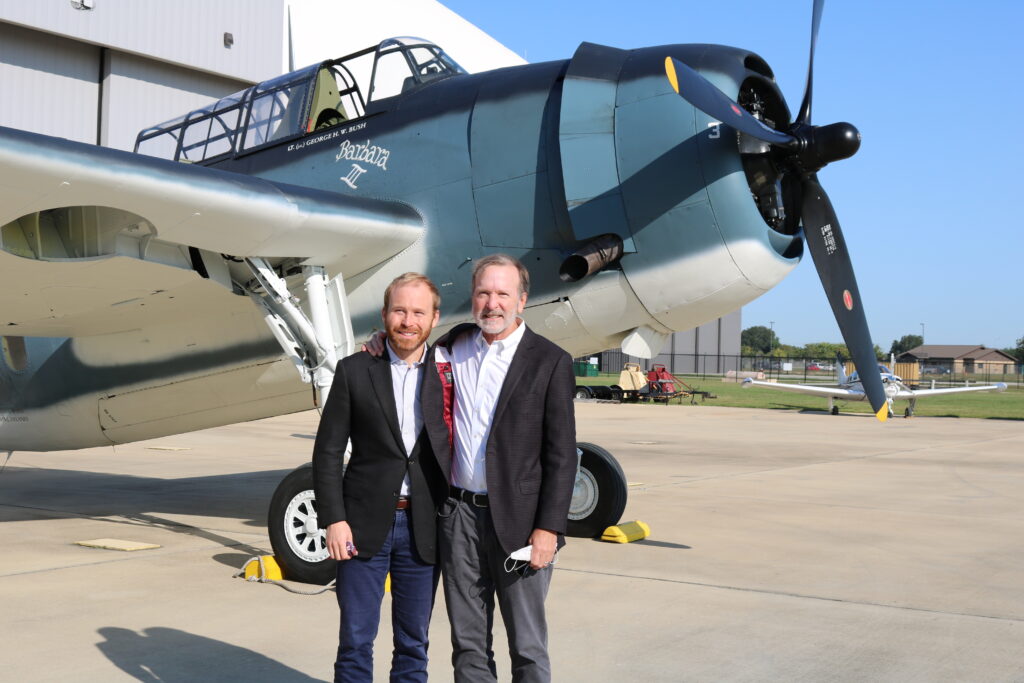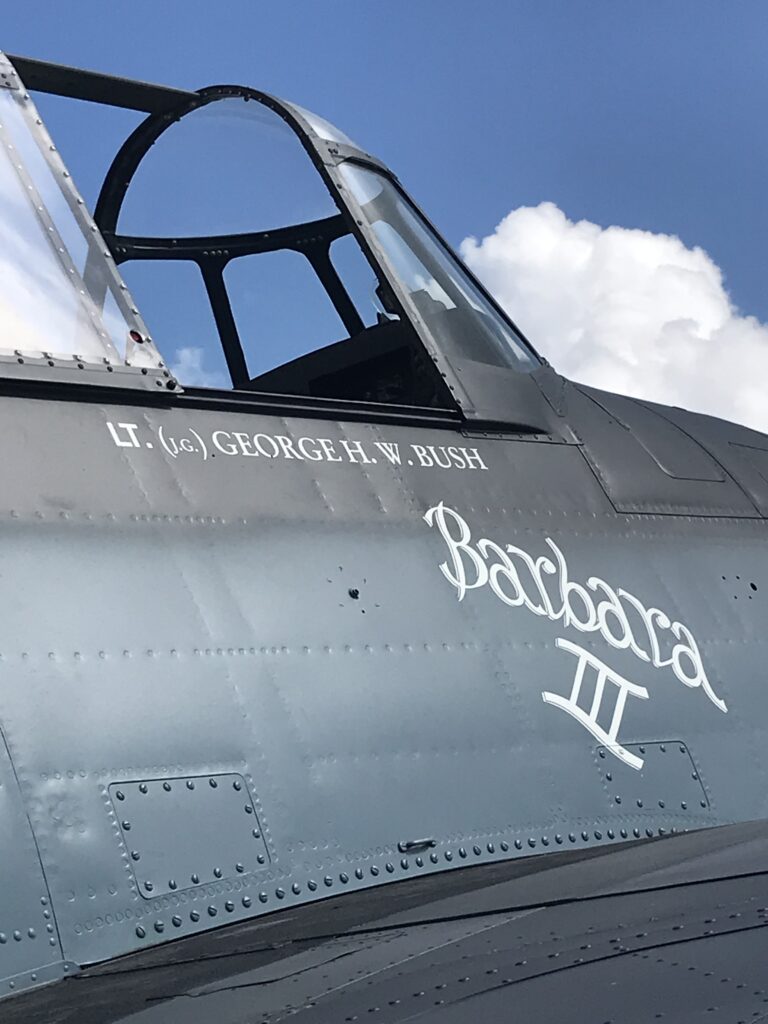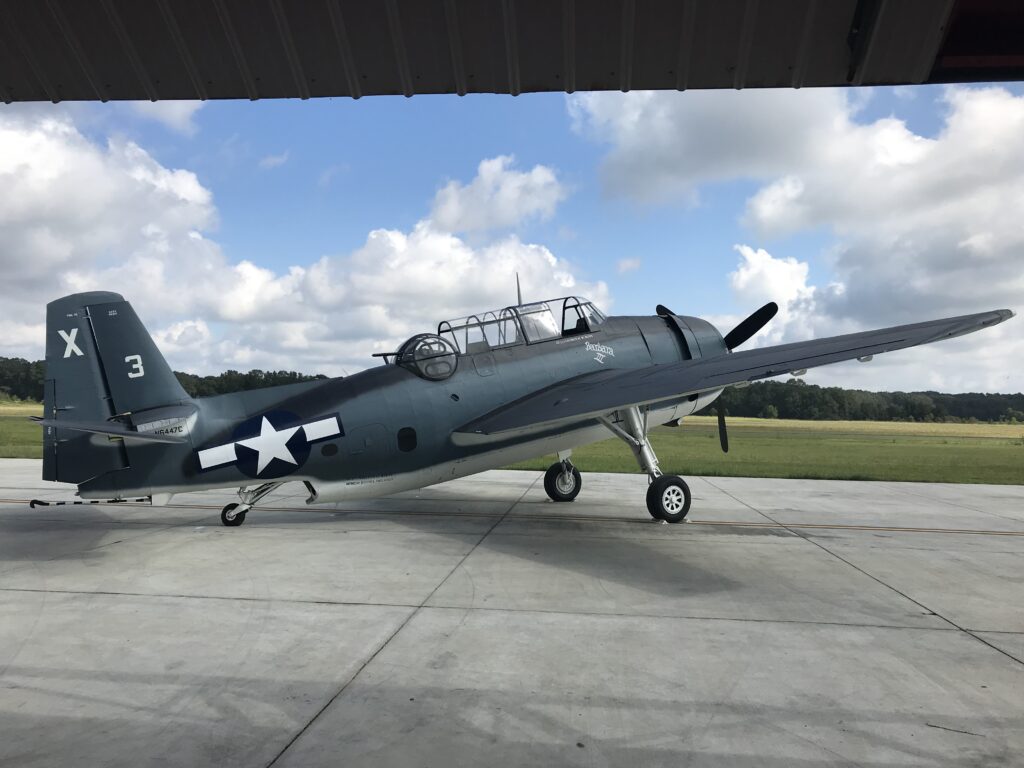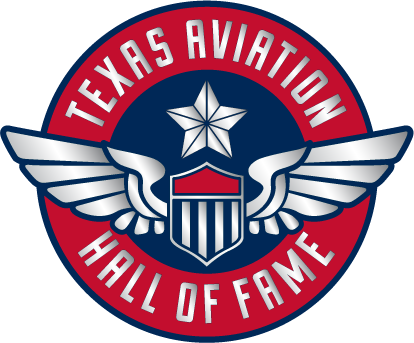The Avenger was the largest single engine aircraft of World War II.
In 1939, aviation technology was changing so fast that two years after they took delivery of the Douglas TBD Devastator, the U.S. Navy was already looking for a new design to replace it as a carrier-based torpedo bomber. The result was Grumman’s TBF, a large single-engine attack aircraft that could carry a torpedo or bombs in an internal bomb bay.
Avengers first saw combat during the Battle of Midway in June 1942 and quickly equipped every U.S. Navy carrier operating in World War II, as well as many carriers of the British Royal Navy. Because Grumman was being pushed to produce F6F Hellcat fighters, production of the Avenger was turned over to General Motors’ Eastern Aircraft Division which built 7,546 aircraft under the designation TBM. These aircraft would go on to drop more tonnage in bombs and torpedoes than any other naval aircraft and would sink dozens of enemy ships including the Japanese super-battleships Yamato and Musashi. TBMs also accounted for 30 German and Japanese submarines as well as 98 enemy aircraft in air-to-air combat.
The key to the Avenger’s success was its versatility. In addition to its role as a torpedo bomber, TBMs were used for dive bombing, level bombing, night attack, photo reconnaissance, anti-submarine warfare, radar surveillance and light transport duties. Nicknamed the “turkey” for their slow lumbering movement and large ungainly appearance while coming in to land, the Avenger served into the mid-1950s and were supplied to allied nations such as Canada, France, England, Brazil, Japan, the Netherlands, New Zealand and Uruguay.
About This Aircraft
This TBM-3E was built by General Motors and delivered to the Navy in June, 1945 where it served until being retired in 1953. It was sold to a civilian buyer in 1957 and used as an airborne fire fighter. After a 1965 accident, it was re-built and used as a crop duster until 1988, at which point it was purchased by the Erickson Aviation Collection in Oregon and restored back to its World War II configuration. It was acquired by LSFM in September, 2017.
In September 2019, the Avenger was restored to a fly worthy replica of George H.W. Bush’s World War II aircraft, “Barbara III”. His plane was shot down on Sept. 2, 1944, during a bombing mission. He was rescued by the submarine USS Finback and resumed combat operations soon after. While his plane was never recovered, Bush’s heroism that day has made the Avenger a permanent part of his legacy as a serviceman and patriot. In support of this effort, the Gary Sinise Foundation, The Robert and Janice McNair Foundation and museum board member Mr. James Bath committed to fund the restoration project.
Quick facts
- Manufacturer: Grumman/General Motors
- Country: United States
- Type: Torpedo Bomber
- Engine: One Wright R-2600-20 Twin Cyclone
- Maximum speed: 276 mph
- Armament: Three .50 caliber machine guns, one .30 caliber machine gun, up to eight unguided rockets and 2,000 lbs. of bombs, mines or a torpedo.
- Ceiling: 30,100 ft.
- Range: 1,010 miles
- Crew: 3.00
- Length: 40 ft. 11 in.
- Wingspan: 54 ft. 2 in.
- Number built: 9,839
Gallery




